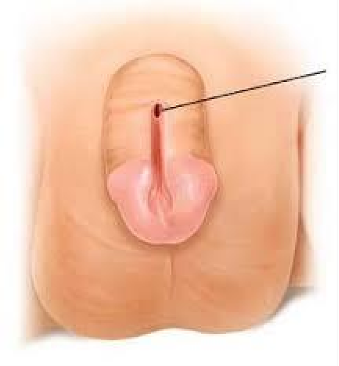What is the most important factor in determining the rate of fluid replacement in the dehydrated child?
The type of dehydration
The child's weight
Urine output
Serum potassium level
The Correct Answer is C
The most important factor in determining the rate of fluid replacement in a dehydrated child
is urine output. Urine output is a crucial indicator of renal perfusion and hydration status.
Monitoring urine output allows healthcare professionals to assess the child's response to fluid
replacement therapy and adjust the rate accordingly.
The type of dehydration in (Option A) is incorrect. The type of dehydration, is important in
determining the appropriate fluid composition for rehydration but does not directly dictate the
rate of fluid replacement.
The child’s weight in (Option B) is incorrect. The child's weight, is considered when
calculating the maintenance fluid requirements, but it does not solely determine the rate of
fluid replacement for dehydration.
Serum potassium level in (Option D) is incorrect. The serum potassium level, is important to
monitor in a dehydrated child, especially in cases of severe dehydration, as electrolyte
imbalances may occur. However, it is not the most important factor in determining the rate of
fluid replacement. Fluid replacement is primarily guided by assessing the child's hydration
status through parameters such as urine output and clinical assessment.
Nursing Test Bank
Naxlex Comprehensive Predictor Exams
Related Questions
Correct Answer is C
Explanation
Epispadias is a congenital condition in which the urethral opening is not located at the tip of the penis as is typical but rather along the ventral surface (underside) of the penis. In severe cases, the urethral opening may extend all the way to the bladder.
absence of a urethral opening in (option A) is incorrect because it, describes a condition called urethral agenesis or aplasia, where the urethral opening is completely absent. This is a different condition from epispadias.
a penis shorter than usual for age, in (option B) is incorrect because it is not specific to epispadias and could be caused by various factors unrelated to the condition.
a urethral opening along the dorsal surface (topside) of the penis in (option D) is incorrect because it, is a condition called hypospadias. Hypospadias is another congenital anomaly where the urethral opening is located on the underside or along the ventral surface of the penis, but it is not synonymous with epispadias.
Therefore, epispadias specifically refers to the urethral opening being situated along the ventral surface of the penis.

Correct Answer is C
Explanation
Hypoglycaemia is characterized by low blood sugar levels. In children, symptoms of hypoglycaemia can vary, but irritability is a common sign. Other signs and symptoms of hypoglycaemia in children may include sweating, trembling, pale skin, hunger, weakness, confusion, and dizziness.
Normal sensorium and serum glucose greater than 160 mg/dL in (Option A) is incorrect because a normal sensorium (normal level of consciousness) and a serum glucose level greater than 160 mg/dL would not be indicative of hypoglycaemia.
Urine positive for ketones and serum glucose greater than 300 mg/dL in (Option B) is incorrect because it describes characteristics of hyperglycaemia (high blood sugar levels) rather than hypoglycaemia. Positive urine ketones and a serum glucose level greater than 300 mg/dL are commonly seen in diabetic ketoacidosis, a complication of high blood sugar levels in diabetes.
Increased urination and serum glucose less than 120 mg/dL in (Option D) is incorrect because it describes increased urination and a serum glucose level less than 120 mg/dL. While a serum glucose level less than 120 mg/dL could indicate hypoglycaemia, increased urination is not a typical sign of hypoglycaemia. Increased urination may be seen in conditions such as diabetes mellitus when blood sugar levels are consistently high.
Whether you are a student looking to ace your exams or a practicing nurse seeking to enhance your expertise , our nursing education contents will empower you with the confidence and competence to make a difference in the lives of patients and become a respected leader in the healthcare field.
Visit Naxlex, invest in your future and unlock endless possibilities with our unparalleled nursing education contents today
Report Wrong Answer on the Current Question
Do you disagree with the answer? If yes, what is your expected answer? Explain.
Kindly be descriptive with the issue you are facing.
